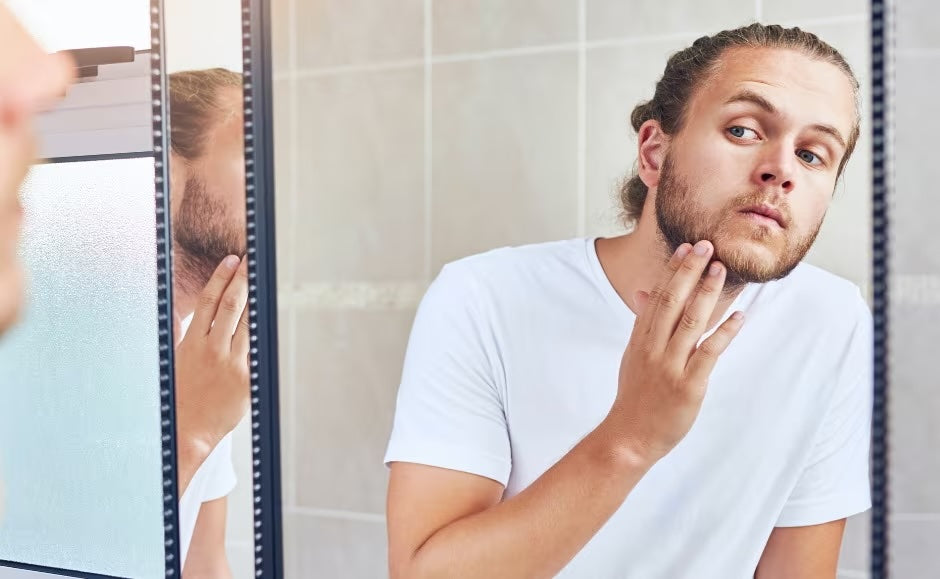
How Does Your Skin Health Affect Facial Hair Growth?
Share
Growing facial hair is trending, and somebody is sporting a beard everywhere you look, from sports stars to actors. How do these public people grow such magnificent facial specimens? Is their skin health that good? Yes, the health of your skin affects your ability to produce decent facial hair, just as a beard can also impact your skin health.
1. Razor Burn
You know what razor burn is, right? That perfect shave sometimes ends up too close, especially with slightly used razor blades. The result of your endeavors is a stinging red and raw section — often near the base of the neck — due to friction caused in your hunt for that closer shave.
Razor burn is a form of irritant contact dermatitis, and the risk worsens when shaving against the natural grain of the hair or without shaving cream or gel. To reduce the risk of razor burn, apply your shaving cream or get and wait for two minutes before you start shaving. Then, always shave with the grain of your facial hair to restrict unnecessary resistance to the blade.
Replace the razor or head, but don’t be without one altogether. Even with a wholesome beard, you’ll likely still need to shave around its edges before applying a high-quality beard balm or oil.
When done, rinse your face and neck in cold water and rehydrate with a decent moisturizer. Although razor burn won’t stunt hair growth by itself, it is often responsible for ingrown hairs, known in extreme form as razor bumps.
2. Dry Skin and Beard Dandruff
You may develop dandruff, which shows up in your beard or sideburns. Although not a primary contributor to hair loss, you can damage your follicles if you itch too much, causing the strands to thin.
Beard dandruff also makes for unsightly facial hair, which is undoubtedly not what you want. If you have a penchant for dry skin, it could benefit you to seek preventive treatment before growing a beard. Doing so can help your preexisting skin condition and also reduce the risk of serious skin diseases in the future.
3. Razor Bumps
Razor bumps may occur after developing razor burn when a growing hair curls in on itself, creating an itchy and irritating bump that fills with puss. If you’re a frequent shaver, you’ll likely develop fewer razor bumps, as you’ll keep shaving before hair growth. If you stop shaving, the likelihood of ingrown hairs will increase unless you’ve taken steps to alleviate the burn.
Some experts suggest stopping shaving if you develop razor bumps. Perfect — you’re growing a beard anyway, aren’t you? Except it’s not ideal on its own. Growing your beard over razor bumps can negatively impact your skin, causing irritations underneath your facial hair.
So, stop shaving, but before your beard begins blossoming, use one or more of these remedies:
- Coconut oil
- Honey
- Cucumber
- Tea tree oil
- Apple cider vinegar
Alternatively, look for one of the many beard oils, balms or shampoos containing one or more of the listed ingredients. A good beard shampoo or wash, for example, includes antioxidant oils that treat your hair and skin, helping soften both. Using these in conjunction with high-quality beard oil or balm can improve your beard growth while alleviating preexisting skin conditions.
Keep Your Skin Healthy for a Stunning Beard
To grow that beard you’ve wanted for so long, keeping your skin healthy goes a long way. After your facial hair starts taking shape, grooming and treating it is just as essential to maintaining the skin beneath it.
Author Bio
Jack Shaw is the senior lifestyle of Modded and a grooming enthusiast. He has written extensively on beard growth, style and best grooming practices and has been featured on Innovation News Network, Tiny Buddha, Biometric Update and more. Through his writing, he explores topics of men’s health ties into every aspect of their lives.
